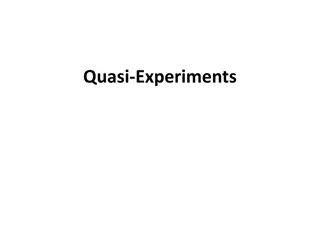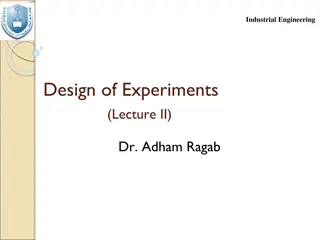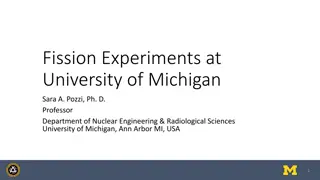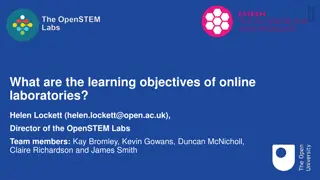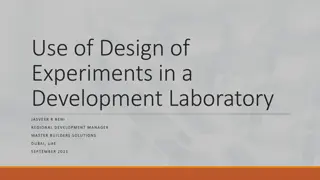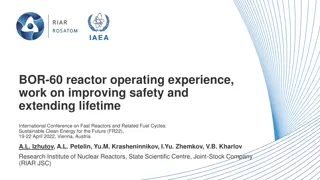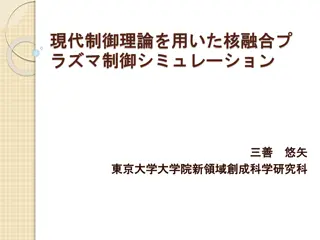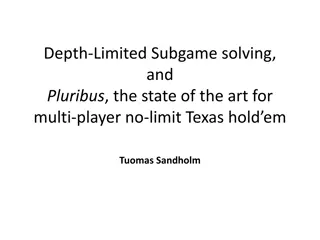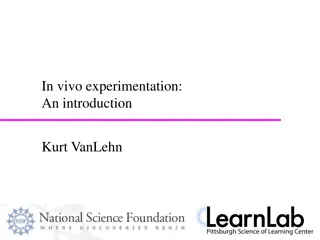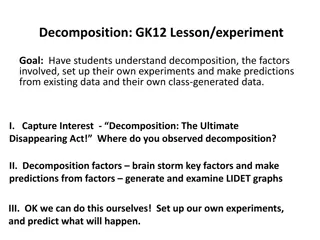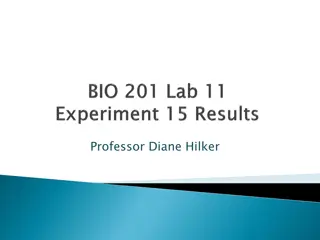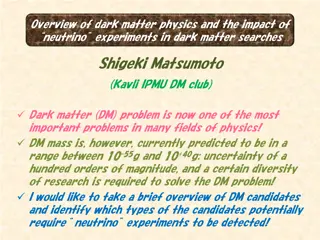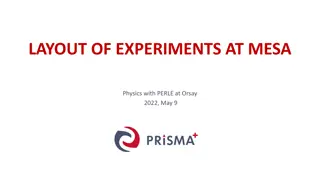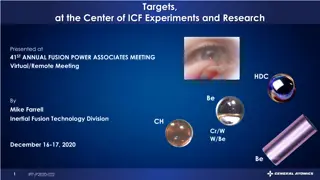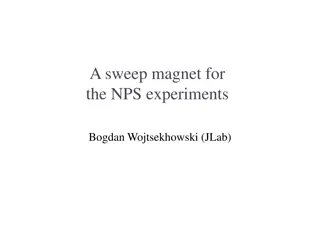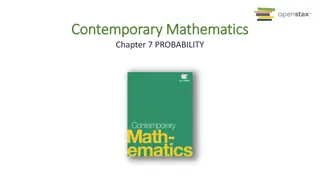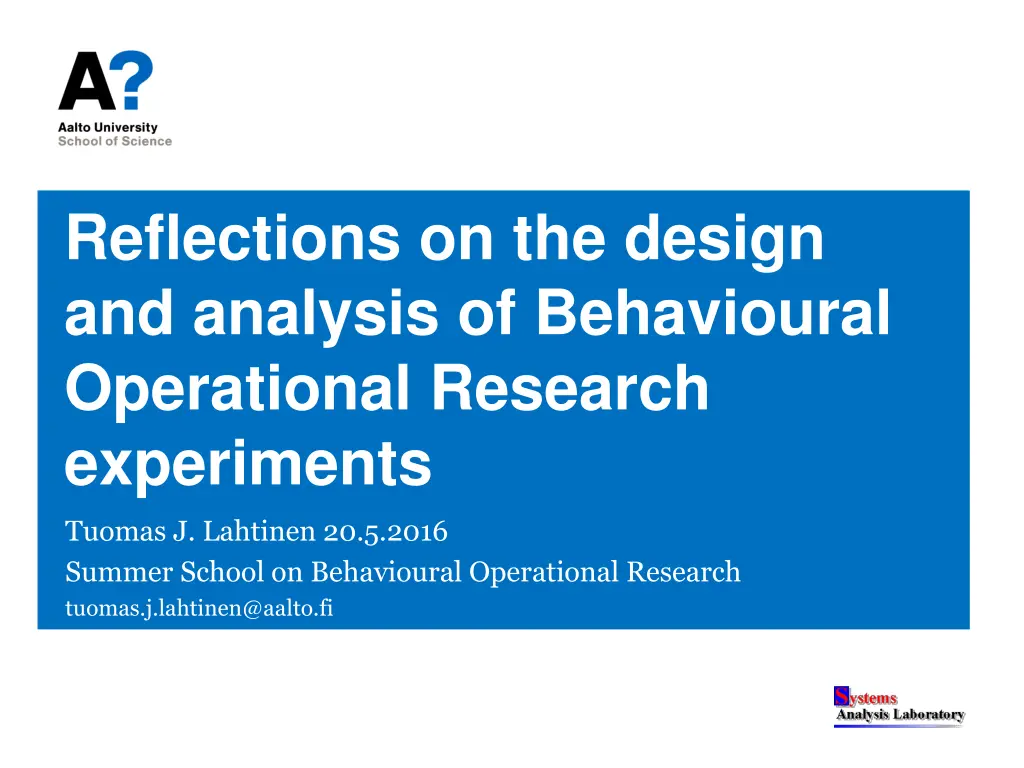
Behavioural Operational Research Experiments Analysis
Explore the design and analysis of Behavioural Operational Research experiments, focusing on subjects, output variables, variability, statistical testing, and null hypothesis significance testing. Learn how experiments enable causal inference and detect treatment effects through statistical analysis methods.
Download Presentation

Please find below an Image/Link to download the presentation.
The content on the website is provided AS IS for your information and personal use only. It may not be sold, licensed, or shared on other websites without obtaining consent from the author. If you encounter any issues during the download, it is possible that the publisher has removed the file from their server.
You are allowed to download the files provided on this website for personal or commercial use, subject to the condition that they are used lawfully. All files are the property of their respective owners.
The content on the website is provided AS IS for your information and personal use only. It may not be sold, licensed, or shared on other websites without obtaining consent from the author.
E N D
Presentation Transcript
Reflections on the design and analysis of Behavioural Operational Research experiments Tuomas J. Lahtinen 20.5.2016 Summer School on Behavioural Operational Research tuomas.j.lahtinen@aalto.fi The document can be stored and made available to the public on the open internet pages of Aalto University. All other rights are reserved.
Typical Behavioural Laboratory Experiment Subjects assigned randomly into 2 or more treatments E.g. different models / processes / instructions to analyze the same problem One or more measurable output variables related to e.g. behaviour of the subjects, success in the task Experiments (ideally) enable causal inference What is the effect of the treatment? Studied by looking how output variables vary across the treatments
Variability in output values Variability due to differences in treatments Intended differences what we really want to study (Non-intended e.g. mistakes by the instructor) Variability due to other factors Differences between subjects (skills, experiences, preferences, way of thinking) Measurement error Lack of concentration
Statistical testing To detect the effect of the treament Cf. random variability in data Institutional reasons: Encouraged common practice in many areas of science Attitudes vary across disciplines e.g. psychology vs physics Related biases Clustering illusion (seeing patterns in random data) Confirmation bias
Null hypothesis significance testing Can the results be explained by random variability? If yes, the results are not statistically significant Null hypothesis: Different treatments lead to same output values on average (any observed differences between treatments only due to random variability) Alternative hypothesis: Different treatments lead to different output values (observed differences between groups affected by treatments!)
Example: Expert judgment task Independent two-sample t-test 40 subjects assigned randomly into a control group and treatment group
Which one is true? Null hypothesis: All observations come from same distribution Alternative hypothesis: Different groups have different mean response values
Test statistic If null hypothesis is true (and data is normally distributed) Test statistic T will follow student distribution t(38): Extreme values are unlikely if null hypothesis is true
P-value Calculated with the test statistic If the null hypothesis was true, how likely is it that we obtain this strong or stronger evidence against it (and in favor of the alternative hypothesis)? P 0.05 usually the threshold of statistical significance Reject null hypothesis, the treatment has an effect! Remark: Statistically significant results 5 out of 100 times even when null is true!
If null hypothesis is true, 0.4% probability to obtain this extreme data
Interpretation: Very unlikely to observe similar results if the null hypothesis is true => Reject null hypothesis => Treatment has an effect on the mean response
Inference errors Alternative is true, but results not significant Null hypothesis is true, but results still statistically significant Also*: Sign error Magnitude error *Gelman, Carlin (2014): Beyond Power Calculations Assessing Type S (Sign) and Type M (Magnitude) Errors
Statistical power Probability to reject H0, given that a certain true effect exists Weighted coin example* 10 coin flips Significance criterion = 5% Power depends on: Statistical significance criterion Magnitude of the effect Sample size Statistical test used Experimental design 100 flips 1000 flips *http://www.statisticsdonewrong.com/power.html
Statistical power Probability to reject H0, given that a certain true effect exists Weighted coin example* 10 coin flips Significance criterion = 5% Power depends on: Statistical significance criterion Magnitude of the effect Sample size Statistical test used Experimental design *http://www.statisticsdonewrong.com/power.html
Choosing the right statistical test Number of experimental conditions? Ratio, interval, ordinal or categorical data? Within or between subject design? How the data is distributed? Normality of residuals? Examples of statistical tests: T-test (previous example), Mann Whitney U-test McNemar s test ANOVA (Regression analysis)
Analysis of variance (ANOVA) Two or more treatments Null hypothesis: Mean response same across treatments Alternative hypothesis: At least one treatment produces different mean response Basic equation of ANOVA: Total variance in response data = Variance between treatments + Variance within treatments Test statistic = Variance between treatments / Variance within treatments High values are unlikely if null hypothesis is true
Examples of Behavioural OR experiments
Transfer of learning experiment Monks, Robinson, Kotiadis (2016) in EJOR special issue on BOR Conditions (between subjects design): MB = Model building MBL= Model building with limited time MR = Model reuse ??? 3 output variables Null hypothesis = All conditions produce the same mean Alternative hypothesis = At least one condition produces different mean
Path dependence in Even Swaps Lahtinen and H m l inen (2016) in EJOR special issue on BOR Directional alternative hypothesis Conditions (within subject design): PRI = Ss follow pricing out strategy IRR = Ss use Irrelevance feature of the software DOM = Ss use Dominance features of the software Six pairwise comparisons Probability to obtain 28 or more success with 34 coinflips (McNemar s test)
How to improve your statistical experiment Design of experiments Within subject experiment possible? Blocking = grouping data based factors known to influence results, e.g. gender (c.f. the idea of control variables) Increase data quality Enhance motivation to perform the task: Familiarity, alignment with personal interests, topical Incentives: Money, learning Choose accurate output variables Enable concentration, measure it, discard bad data Clear instructions to reduce errors
Statistically significant results this is it, let s write the paper! Right?
Statistically significant results this is it, let s write the paper! Right?
Practical vs. statistical significance Even minimal effect size can be statistically significant, if number of subjects is high enough Statistical significance does not imply practical significance What does the result imply for the wider problem or system one is dealing with? Practical significance to decision making Does our decision change if we assumed that X is xA or xB? If not, the result is not practically significant for the decision making context given.
Understanding the mechanism Why different results are obtained with different conditions? Can be studied by looking at what happens during the experiment not just the inputs and the ouputs Helps to solve the research puzzle build confidence in the results generalize study the phenomenon by simulation create prescriptive recommendations
Example: Even Swaps Mechanism: Accumulated effect of two known trade-off biases Studied by looking at swaps conducted during the experiment Loss aversion: Average out by switching reference alternative used Measuring stick effect: Reduce it by using a measuring stick where alternatives are initially close to each other Reduce accumulated error and bias: Restart with original consequences after each elimination
Drawing generalizations from a laboratory experiment Purpose of experimentation is to provide information that is useful in other situations and to guide future actions Does our sample represent the population of interest? People factors: gender, age, assumptions, values? What is the context / decision problem like? Work backwards to achieve representativeness Try mimic the real situation where the information will be used.
Attitudes towards generalizing when not sure of representativeness Existence proof We show that a phenomenon occurs in some contexts with some people Proof of concept We demonstrate that a solution can be useful List of possibilities Observe and list phenomena that can occur in certain types of situations Practitioner can benefit from being aware of these possibilities
The statistical crisis in science Open Science Collaboration (2015) Estimating the reproducibility of psychological science (Science) Only thirty-six percent of replications had significant results Mean effect size in replications was half the original size Total 100 replications
Traps in data analysis Data dredging (also p-fishing): Searching for several patterns in the data without first specifying a hypothesis Once a statistically significant pattern is found, develop an explanation for it Is not a problem in explorative research but researcher should clearly acknowledge it 10 independent data analyses on random data, chance to get at least one statistically significant result is 1-(0.95)^10 *100% = 40%
Garden of forking paths (Gelman, Loken 2013) Data analysis is a garden of forking paths even if research hypothesis was posited ahead of time Choices: What you will primarily look into? Do you look into interactions between variables? How you code, process and analyze data? Which data you exclude? How you combine data and interpret combined data? So many ways to find statistically significant results, that you can if you want to!
What can we learn from this as Behavioural OR researchers? Run pilot experiments Subjects can be friends, colleagues, yourself Test initial hypotheses, decide how data is analyzed, form quantitative hypotheses, try to understand the mechanisms Real experiment: Set quantative hypotheses and decide how data is analyzed in advance Communicate openly about data analysis As a research community: Replications? Pre-registration?
Thank you Photo by Dioboss, CC BY-NC-SA 2.0


